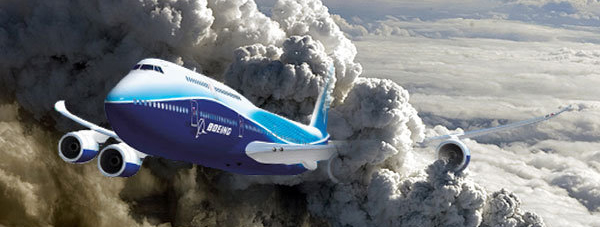
This research line evaluates the impact of volcanic ash for aviation and insurance stakeholders based on user-defined criteria.
Summary
Atmospheric dispersion of hazardous substances (e.g. volcanic ash) influences many economic markets, and poses a variety of problems to the aviation industry. For example, the presence of airborne volcanic ash at low and jet-cruise atmospheric levels compromises the safety of aircraft operations and forces re-routing of aircraft to prevent encounters with volcanic ash clouds. Past events have shown the difficulty to access to atmospheric hazard dispersal information useful for Air Traffic Management (ATM). For example, due to the extent of the ash cloud generated by the 2010 Eyjafjallajökull volcano eruption in Iceland, more than 100,000 flights were cancelled, causing a loss of more than US$1.7 billion airline revenues and more than 10 million stranded passengers. In addition, these catastrophic impacts pose a variety of problems for the insurance companies. In 2014 overall losses totaled US$110 billion of which about US$31 billion was insured.
The forecast of these catastrophic events relies on the development, implementation and execution of computational intensive atmospheric transport models in order to simulate the dispersal of each hazardous substance. The need of High Performance Computing (HPC) to run these models in an operational way and the lack of customer-based solutions to digest and process this information prevents aviation industry to access to this information in suitable way to enhance their decision-making during such events. Despite the existing demand for solutions capable to evaluate and manage these natural hazards and to provide credible scientific expertise to improve risk management across multiple industries, to date, no commercial product is available in the market to solve these problems.
Objectives
By means of its spin-off, the Barcelona Supercomputing Center develops and commercializes the SORT-ATM technology, a user-friendly HPC software application capable to provide customer-based solutions for Air Traffic Management in two different phases of a catastrophe management cycle: (i) the short-term operational response, and (ii) the long-term hazard and risk assessment. The evaluation of impacts is based on calculations of a unique algorithm that employs HPC meteorological and atmospheric dispersion models; parameters for flight plan configurations and schedule, aircraft specifics, weather conditions and other relevant air traffic management and asset data from clients. Future implementations of SORT-ATM are projected to include custom-based operational turbulence and fog forecasts products.


